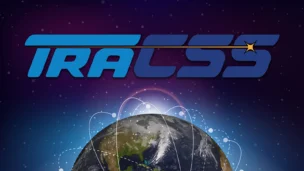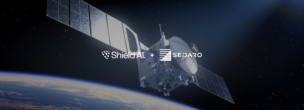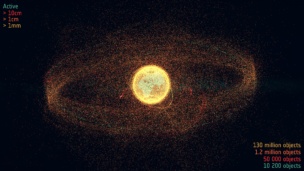The Office of Space Commerce awarded the first contracts to shape the long-awaited Traffic Coordination System for Space (TraCSS), a multi-year effort to move the federal space situational awareness mission from the DoD into civilian hands.
The winners: The office selected three companies on Friday for a pathfinder project that will inform the final design of TraCSS:
- LeoLabs will use its global radar network to collect and organize data on spacecraft and debris in orbit
- Slingshot Aerospace will use its network of optical telescopes to do the same
- COMSPOC will combine that data with its proprietary software to forecast the location of objects in LEO, as well as assess its accuracy.
OSC and the companies declined to share the contract value, but we’ll get it from public contract databases shortly.
The program will see the teams track calibration objects in orbit to set benchmarks from now until March, then spend a month determining the weights and biases of the different sensors involved. The providers will then track activity in LEO through June 30.
Crowded room: “Space traffic coordination has never been more important,” LeoLabs CEO Dan Ceperley told Payload, noting the number of spacecraft in LEO growing at a rapid pace. Amazon’s Kuiper constellation and China’s Guowang are expected to add thousands of new spacecraft to LEO alongside the existing large Starlink and OneWeb constellations. Starlink itself reported performing 24,410 collision avoidance maneuvers between June 1 and Nov. 30, highlighting the growing need for better space tracking and traffic modeling.
“We believe with great evidence that the accuracy of commercial systems far exceeds the accuracy of DOD systems,” said COMSPOC VP Mike Wasson, who worries that satellite operators are burning fuel to maneuver unnecessarily—sometimes into positions of greater risk—thanks to less accurate info.
This first purchase of space situational awareness data will demonstrate the effectiveness of this relatively youthful sector of the space industry, per Slingshot VP and former NSC staffer Audrey Shaffer. She added that commercial SSA can allow the military to focus its limited sensors on potential threats rather than being the world’s clearinghouse for space traffic.
Watch out: Civil space traffic coordination has been on the government agenda since Space Policy Directive 3 in 2018, but a lack of funding from Congress meant slow progress. The Senate fiscal 2024 budget proposal keeps the OSC funded at last year’s $70M level, but a proposal from the House would cut the budget to $40M, which could slow the roll-out significantly.




